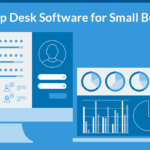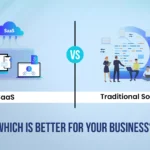
Cloud computing has rapidly transformed how individuals and businesses manage, store, and access data. No longer just a buzzword, cloud computing has become a staple in modern digital operations, enabling everything from basic online storage to powerful business applications. But what exactly is cloud computing, and why has it become so essential? In this article, we explore the fundamentals of cloud computing, its benefits, types, and how it’s changing industries worldwide.
What Is Cloud Computing?
At its core, cloud computing refers to the delivery of computing services—such as storage, processing power, databases, and software—over the internet, or “the cloud.” This allows users to access data and applications without relying on local hardware or servers. Instead, resources are housed in remote data centers and delivered to users on-demand.
Why Cloud Computing Matters
Cloud computing has become indispensable for its convenience, flexibility, and scalability. It allows businesses and individuals to:
- Access Data Anywhere, Anytime: Users can work from anywhere as long as they have an internet connection.
- Save on Costs: Instead of buying and maintaining expensive hardware, users can access computing resources as a service, paying only for what they use.
- Enhance Collaboration: Multiple users can access and work on the same data or application simultaneously, boosting productivity.
- Enable Scalability: Businesses can easily scale their storage or processing capacity based on demand.
Types of Cloud Computing
Cloud computing services are generally divided into three main types, each suited to different needs:
- Infrastructure as a Service (IaaS): Provides basic storage, networking, and computing resources. Users can build and manage their software without having to maintain physical servers.
- Platform as a Service (PaaS): Offers a framework that developers can use to build custom applications. It includes tools for development, testing, and deployment.
- Software as a Service (SaaS): Delivers software applications over the internet on a subscription basis, making them accessible to users without installation.
Deployment Models of Cloud Computing
There are various ways to deploy cloud resources, tailored to different organizational needs:
- Public Cloud: Managed by third-party providers and available to anyone. It’s the most cost-effective option but may offer less control.
- Private Cloud: Owned by a single organization, providing more control and security, though at a higher cost.
- Hybrid Cloud: Combines public and private cloud elements, allowing businesses to share data and applications across environments for greater flexibility.
Top Benefits of Cloud Computing
The growing adoption of cloud computing is no accident. It offers numerous advantages for businesses, large and small:
- Cost Efficiency: With cloud computing, companies avoid the high costs of owning hardware and physical data centers.
- Disaster Recovery: Cloud providers offer backup and recovery solutions, minimizing the risk of data loss.
- Environmental Sustainability: Cloud data centers are optimized for efficiency, reducing energy consumption compared to on-premises data centers.
- Automatic Updates: Cloud providers manage software updates, freeing users from maintenance responsibilities.
- Enhanced Security: Most cloud providers invest in high-level security protocols, including encryption and threat detection, ensuring data protection.
How Cloud Computing Transforms Industries
Cloud computing is shaping numerous industries, from healthcare to finance, by enhancing efficiency and enabling new possibilities.
1. Healthcare
Healthcare organizations utilize cloud computing to store and access patient records, improve collaboration among medical staff, and leverage data analytics for better patient outcomes. For example, cloud-based telemedicine platforms enable remote consultations, making healthcare more accessible.
2. Education
Educational institutions leverage cloud computing for online learning, resource sharing, and data storage. Cloud platforms provide access to interactive learning tools, enabling students and teachers to collaborate from different locations.
3. Finance
Banks and financial institutions use cloud computing to store data securely, process transactions, and comply with regulatory requirements. Cloud computing allows financial institutions to analyze data in real-time, enabling faster and better decision-making.
4. Retail
Retailers benefit from cloud computing by using data analytics to track customer preferences, optimize inventory, and personalize shopping experiences. Cloud-based e-commerce platforms also allow retailers to scale up during peak shopping periods, such as Black Friday or holiday seasons.
5. Media and Entertainment
The media industry uses cloud computing to stream content, manage large volumes of data, and enhance audience engagement. Platforms like Netflix and Spotify rely on cloud computing to deliver content seamlessly to millions of users.
Future Trends in Cloud Computing
As cloud computing continues to evolve, several key trends are emerging:
- Multi-Cloud Strategy: Many businesses are adopting a multi-cloud approach, using different cloud providers for various needs to avoid dependency on a single provider.
- Edge Computing: Edge computing brings computation and data storage closer to the data source, enhancing speed and reducing latency.
- AI and Machine Learning Integration: Cloud platforms are integrating AI and ML tools, enabling businesses to process and analyze large data sets for better insights.
- Serverless Computing: This model allows developers to build and deploy applications without managing infrastructure, further simplifying development processes.
Key Considerations When Choosing a Cloud Provider
Selecting the right cloud provider is essential for maximizing cloud computing benefits. Here are some factors to consider:
- Security Measures: Look for providers that offer robust security, including data encryption, firewalls, and compliance with regulatory standards.
- Service Reliability: Choose a provider with a strong uptime record to ensure consistent access to data and applications.
- Scalability Options: Ensure the provider can support your growth by offering flexible resource allocation.
- Cost Structure: Compare pricing models and understand how charges are calculated based on usage.
- Customer Support: A responsive support team is essential for quick resolution of issues.
Common Challenges in Cloud Computing
While the advantages of cloud computing are numerous, businesses may face certain challenges:
- Data Privacy and Security Concerns: Storing data on external servers raises concerns about data breaches and unauthorized access.
- Downtime and Outages: Cloud providers occasionally experience downtime, which can disrupt business operations.
- Compliance Issues: Certain industries, like healthcare and finance, have strict regulations regarding data storage and sharing, requiring compliance with standards.
- Migration Complexity: Moving existing systems to the cloud can be complex and may require adjustments in processes and technology.
FAQs about Cloud Computing
- What is cloud computing?
Cloud computing is the delivery of computing services over the internet, allowing users to access resources remotely. - Is cloud computing secure?
While cloud providers invest heavily in security, users should also take precautions like using strong passwords and enabling two-factor authentication. - How does cloud computing reduce costs?
By avoiding the need for physical servers and infrastructure, users only pay for the resources they use, which can significantly reduce IT expenses. - Can small businesses benefit from cloud computing?
Absolutely. Cloud computing is cost-effective and scalable, making it an ideal solution for small businesses seeking flexible resources. - What is the future of cloud computing?
The future of cloud computing is likely to include more advanced AI integration, edge computing, and a shift toward multi-cloud and serverless solutions.
Conclusion: Embracing the Power of Cloud Computing
Cloud computing has redefined how businesses operate and how individuals access data and services. As technology advances, cloud computing’s capabilities continue to expand, offering ever-increasing flexibility, efficiency, and cost savings. Whether you’re a small business, a large enterprise, or an individual user, the cloud offers tools and services that can transform the way you work and live.


















